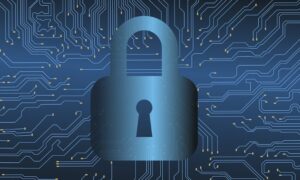Kids have gone digital and are often more proficient than adults at using it. Not all teenagers use technology for good intentions, and they aren’t always aware of good digital etiquette. Some people have welcomed it as a new kind of bullying. There are several ways children get bullied online, and below are some of them.
1) Shaming
Swiping images from a person’s social media page and uploading them with remarks that embarrass and degrade the individual in the photo are examples of these actions.
Slut-shaming, fat-shaming, and public shaming are all examples of shaming. Even though the practice is most common among girls, anyone can be a victim.
In worse scenarios, photos of some individuals go viral reaching thousands of people. Furthermore, people have created social media pages dedicated solely to teen shaming activities, with bullies competing for the foulest comments about others.
2) Photo-morphing
Morphing someone’s face onto an explicit, inappropriate picture is common among children. On the internet, this morphed image can spread like wildfire, thus publicly shaming the victim.
3) Cyberbaiting
Students tease their peers to the point of outbursts in cyber-baiting bullying. Then they film their reaction and upload it online for all to see. Cyberbaiting has affected many children around the world, creating a false impression of them online.
Having a video of oneself in an anger outburst online (even as a child) can hurt future job prospects.
4) Disclosing personal information
It happens when the cyberbully decides to post the victim’s personal information in a questionable internet forum. There are several instances where cyberbullies posted phone numbers and social media IDs on pornography websites.
It causes the victim to get flooded with vulgar, threatening messages and pinpointing the offender gets difficult in this situation. It is wise to stay protected and anonymous to avoid such eventualities. To do that, you can start by using a VPN for day-to-day browsing. It will make you completely anonymous on the web. To get started, you can go for a top-rated VPN service recommended by experts from sources such as VPNRanks to avoid or lessen the effects of this sort of cyberbullying.
5) SWAT-ing
When children try tricking an emergency service into dispatching an emergency response team, they are SWAT-ing a victim. Callers mask their origins, change their voices, and sometimes even add background sound effects using services like Spoofcard. The SWAT teams break down doors and ransack the house, and the blame for the false alarm falls on the victim.
6) Videotaping
The opposite of cyber baiting is videotaping, where children shamelessly humiliate another child on videotape. Bullying usually consists of one or more children hitting, beating, kicking, or punching a victim. The video is then uploaded to YouTube, allowing a big audience to see the bullying.
Videotaped bullying is sometimes shared via bulk text messages or emails by children in their peer group. The purpose of sharing the incident is to humiliate and shame the victim even more. Harmful and extreme pranks, where people get harassed in the name of a joke, are also forms of cyberbullying.
7) Sexual predation
Sexual predators are rampant across social media platforms, looking for naive children. Many children, in an attempt to gain popularity, make their social media accounts public. Sometimes, older people figure out their home addresses and use the information to stalk the kids.
Children also naively upload their numbers, geotags, and other personal whereabouts on social media platforms for everyone to see. A victim of sexual predation can often develop debilitating anxiety in the future.
How is cyberbullying different?
Both the individual performing the bullying and the person getting tormented are in separate locations when it comes to cyberbullying. Bullies frequently act more confidently online than they would if they were dealing with someone face to face.
Bullies feel safer and more powerful when taunts are online and anonymous. It is easy to destroy evidence and claim innocence in case of online bullying. The instances of victim-blaming are also common in cyberbullying because it is so easy to create a false image of somebody.
People might be less likely to bully others if they witness the physical or emotional consequences of their actions. Cyberbullying is difficult to deal with for those who suffer from it, and victims may not know who is bullying them or when the next heinous attack will occur. Even when they are at home, this can make them feel harassed and frightened.
Bullying statements, pictures, and other media on the internet are extremely difficult to remove. When a few people are present in in-person bullying circumstances, these interactions can get stopped without being seen by several people. Moreover, removing one’s personal information from a website or forum can require people to communicate with several other people.
Cyberbullying can occur at any time of day or night and from any location with an internet or mobile connection, so you can understand now how internet privacy is so important these days. If your child has a disability or suffers from a mental health condition such as depression or anxiety, they may be sensitive to cyberbullying. Teenagers with low self-esteem, below average in school, and academic achievements are frequently victims of cyberbullying.



































